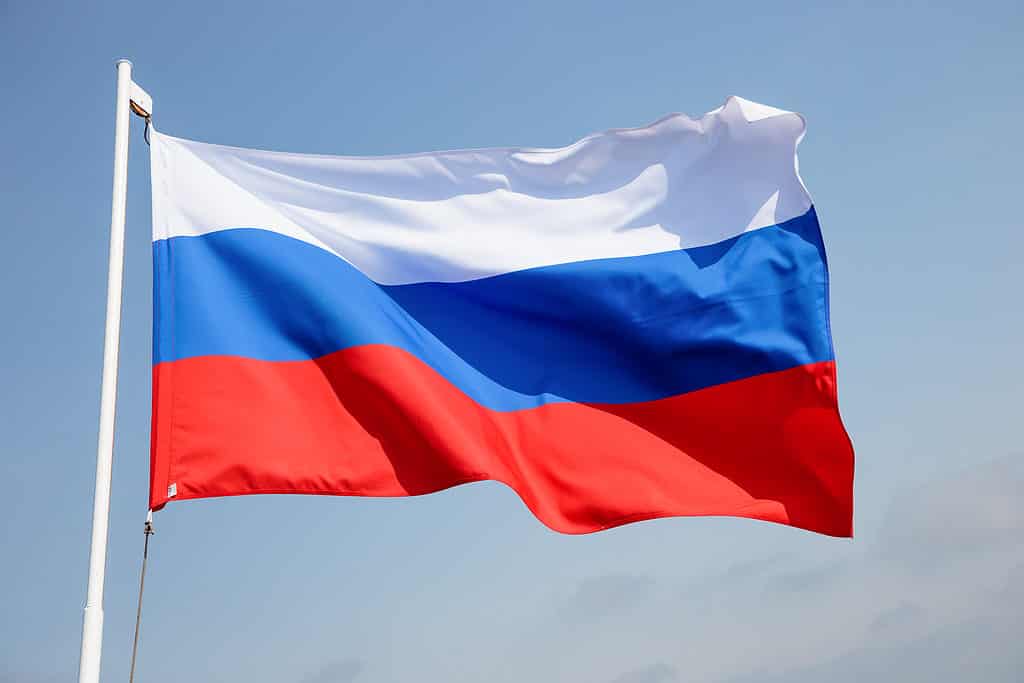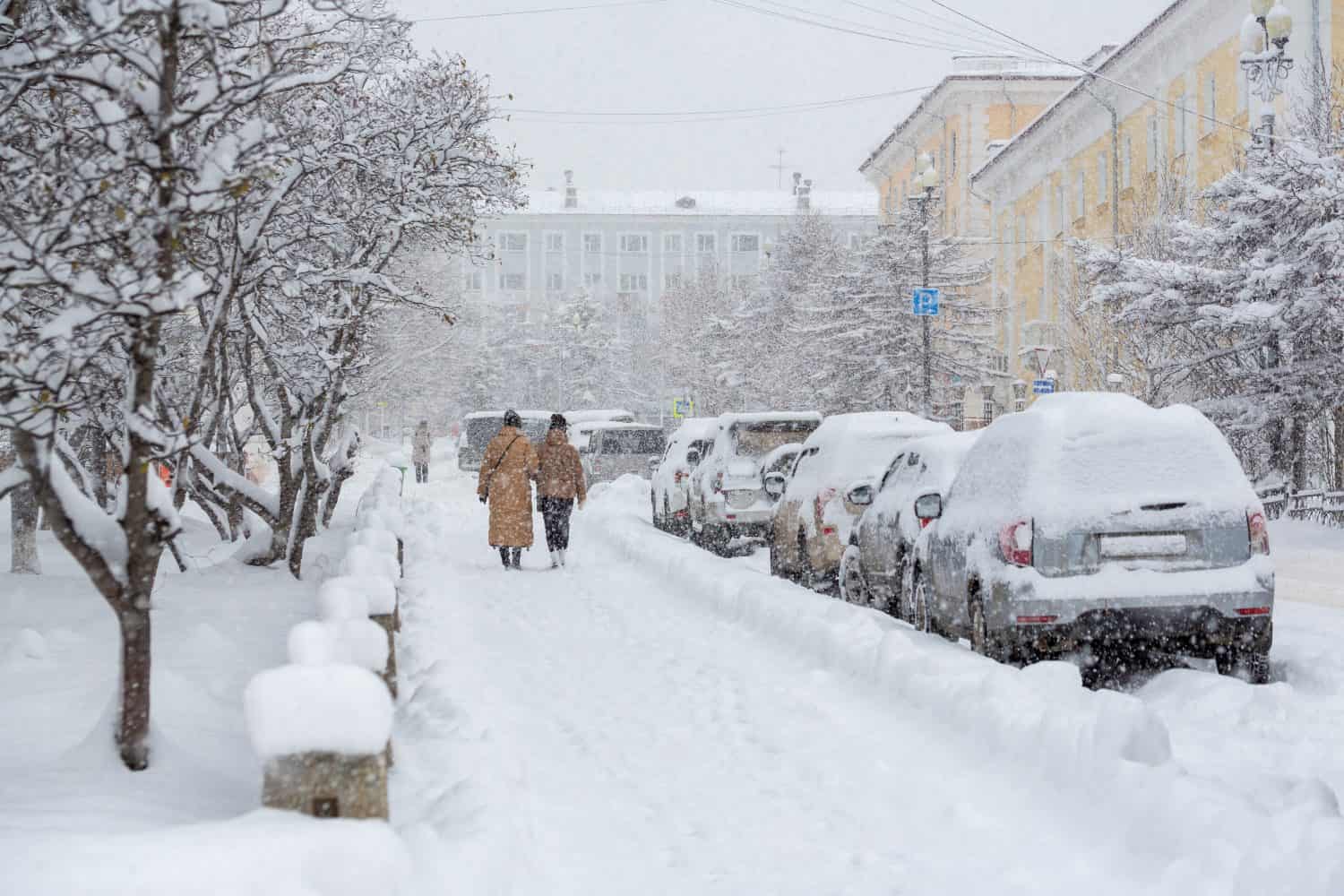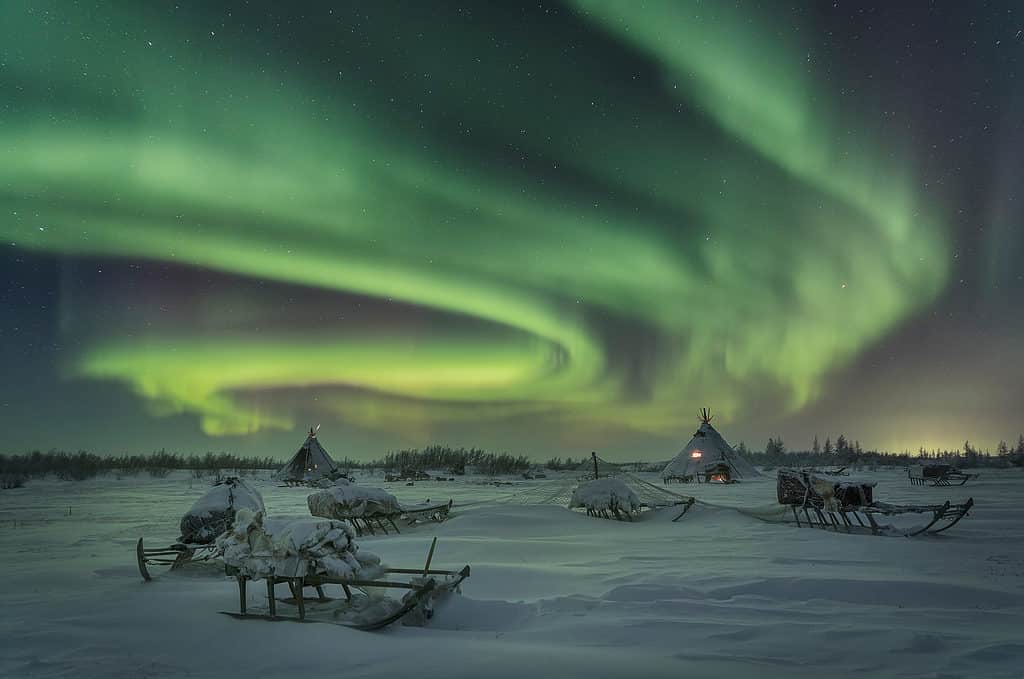When people think about the coldest place on earth, Antarctica is the place that usually comes to mind. In truth, Antarctica is the coldest place on earth. The East Antarctica Plateau, in particular, can have temperatures as low as -128.6° Fahrenheit.
But Antarctica isn’t technically a country. It’s a continent. So, which country is the coldest in the world? Explore the chilling landscapes and icy wonders as we uncover the facts about the coldest country in the world.
A Tale of the Two Coldest Cities

Yakutsk is the coldest city in the world, while Oymyakon is the coldest permanently inhabited place.
©Valera Nevsky/Shutterstock.com
The city of Yaktusk in Siberia lies approximately 280 miles south of the Arctic Circle. The city’s population of more than 355,000 experiences average winter temperatures well below – 4° F. In fact, Yaktusk experienced a record low temperature of – 83.9° F on February 5, 1891.
The Yakuts — or Sakha people — live and work in the intense subarctic climate of the city. During the warmest months of July, temperatures average only 67.8° F, while they hover around – 34.6° F in December.
Oymyakon is the second coldest city in the world, though it’s not technically a city. The 500 villagers in this remote Siberian town live closer to the Arctic Circle than they do to any Russian city. In 1924, the town’s thermometer plunged to a world-record-breaking – 96° F. The town is so permanently beset by cold temperatures that pipes are forever freezing, and nothing can grow in the ground. The people subsist on a diet of mainly meat and fish.
Russia

Russia
is the largest geographical country in the world, with the most people living in large, cold cities.
©pudiq/Shutterstock.com
According to a Brookings study, Russia has the highest concentration of people living in cold cities. There are almost a dozen large cities with populations over half a million and winter temperatures that dip well below freezing. Moreover, many of those cities end up experiencing utility failures each winter.
With frigid weather conditions and infrastructure failures, multitudes of people have died from hypothermia while outdoors or even from freezing to death inside their homes. While people in other cities worldwide have experienced periods of freezing weather with failing utilities, those incidents are typically short-lived. However, these are long, grueling periods of bitter cold in many of these Russian cities and towns.
Siberia

With temperatures that sometimes dip below -80° F, parts of Siberia are at times colder than the atmosphere of
Mars
!
©Andrei Stepanov/Shutterstock.com
For those growing up with old movies about the Soviet gulag and prisoners being banished to Siberia, the picture of this Russian region may be that of a harsh, unforgiving, icy wasteland. In truth, the over five million square miles of Siberia is mostly tundra and taiga. It is harsh, and it certainly can be unforgiving. Yet, over 33.7 million people call Siberia home.
Siberia has infamously severe winters with inhospitable temperatures. The cold is so pervasive that it dictates how people live their day-to-day lives. For instance, people tend to visit each other more often than in other regions of the world. This is, of course, out of necessity. When people venture out, it’s imperative to periodically stop at someone’s house to get out of the cold. A short visit with a cup of tea can save a traveler from frostbite or hypothermia.
Why is Russia So Cold?

Russia’s colder temperatures are well-suited to magnificent views of the Aurora Borealis.
©V.Timoshenko/Shutterstock.com
Russia is an expansive country with diverse climates. Yet, much of the country does, in fact, experience severely cold winter weather. Several factors cause the country’s cold weather.
- Due to its northern latitude, there are cold continental systems.
- Southwestern Russia, southern Siberia, and southeastern Siberia’s oceanic region are all below latitude 50° N, and more than half of the federation is north of latitude 60° N.
- Mountain barriers to the south and east block any mitigating effects from the Pacific and Indian Oceans.
- The northern and western sides of the country are wide open, allowing Arctic and Atlantic influences to bring in severe temperatures.
With Russia’s northern regions lying in the polar zone of the Arctic Ocean, its people experience harsher winters than almost anywhere else in the world — barring Antarctica. Most of the country’s major cities lie west of the Ural Mountains. Moreover, more than 80% of the Russian population make their homes in those cities.
How Do People Live With the Harsh Winters?

People learn to acclimate to their environment by dressing appropriately and taking essential precautions.
©Andrei Stepanov/Shutterstock.com
To many, it may seem nothing short of miraculous that people live and thrive in the brutal Russian winter conditions. But how do they do it? One of the most important lessons Russian people learn early on is how to dress appropriately. There is a Russian saying, “There is no bad weather, there are bad clothes.” Hence, people learn to dress in layers using thermal and fleece clothing. Waterproof boots, several pairs of wool or fleece socks, scarves, gloves, and warm hats are critical to winter survival.
People with cars have sets of both winter and summer tires to ensure safety on winter roads. While driving to errands, drivers will leave their engines running when they run into shops. People staying at hotels will even leave their engines running all night, or they may find it impossible to start them the next morning.
Every Russian town has a central heating system that safeguards against indoor temperatures dipping too low. Nevertheless, people become accustomed to living and sleeping in apartments and homes that waver between 50° and 59° F. They simply wear warm clothes and shoes when indoors, and they sleep with their hats on their heads.
Land of Superlatives

Gorgeous Lake Baikal is the deepest lake in the world.
©Nikitin Victor/Shutterstock.com
Russia is the world’s largest country, stretching over eastern Europe and northern Asia. It was formerly part of the Soviet Union until the Union dissolved in 1991, giving Russia its independence. The expansive country boasts eleven separate time zones, Europe’s longest river (the Volga), the world’s deepest lake (Baikal), and its largest lake (Ladoga).
In addition to the geographical variance, Russia also has over 120 ethnic groups besides ethnic Russians. The multitude of different languages and religious and cultural traditions make this country a rich melange of cultures. The one thing all of these groups share, however, is a resilient nature and stalwart spirit — two attributes needed to thrive in the coldest country in the world.
Thank you for reading! Have some feedback for us? Contact the AZ Animals editorial team.








